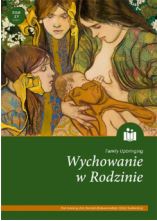Problemy małżeństw binacjonalnych.
Analiza postów na forach internetowych
Problems of binational marriages.
Analysis of Internet discussion forums
Author(s): Małgorzata BiedrońSubject(s): History, Social Sciences, Education, Sociology, Social history
Published by: Zakład Historii Edukacji w Instytucie Pedagogiki Uniwersytetu Wrocławskiego
Keywords: binational marriage; mixed marriage; biculturalism; family; conflicts
Summary/Abstract: Strong homogenous tendencies with regard to such criteria as the nationality, the ethnic race/group, or the practised religion in the Polish culture are typical of the strategy of the selection of the spouse. Data from the Central Statistical Office indicates that the percentage of bicultural marriages isn’t high and is fluctuating (in different years) up to a maximum of 2%. Potentially partners from different countries and cultures may differ in a whole spectrum of issues ranging from the fundamentals associated with the professed worldview and axiological system to the, seemingly trivial, everyday preferences. Analysis of statements of the participants of discussion boards devoted to the functioning of this type of partnership, and the official website of the Association of Poles in Marriages with Foreigners, provided a response to the question: what problems are facing this kind of couples, which they believe poses the greatest obstacle to the successful functioning of the relationship? The study used the method of content analysis of existing materials, which allowed for the creation of separate analytic categories –categorization keys. In order to ensure that the results of research procedure attain the overall merit of intersubjectivity, we created for each categorization key a definition describing and detailing what is included in this category. The last step was to create a table with the matically grouped quotes. Development of empirical materials can scratch three problem areas: relationships in the dyad (communication, understanding, conflict resolution, community building, defining roles, etc.), Contacts with the social environment (family, friends, colleagues, neighbours), relationships with institutions (especially state institutions foreigners).
Journal: Wychowanie w Rodzinie
- Issue Year: XV/2017
- Issue No: 1
- Page Range: 93-115
- Page Count: 23
- Language: English, Polish

